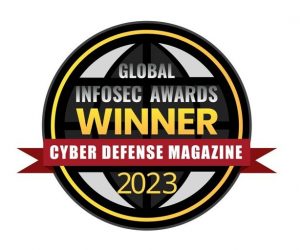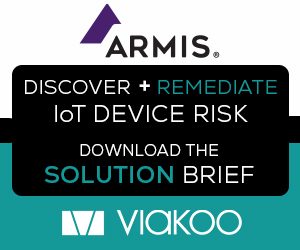
Do you think IoT devices as part of a physical security network are a blessing or a curse?
If you said “blessing,” you are right. If you said “curse,” you are also right. The truth is, they are both – and understanding their dual nature is one key part of avoiding issues in your physical security system.
The entire security market agrees: networked IP surveillance cameras have enormous advantages over previous approaches. Their capabilities are moving forward at an astonishing rate, and the detailed data they provide can be processed by downstream system elements to extract even more information, insights, and actionable intelligence. As soon as they are attached to a network, they become part of the Internet of Things (IoT).
The power of IoT operations is that it is possible to track and analyze the data around those IoT devices, gaining more insight into the security system at broader sense. As IoT devices are added, that additional data brings additional insight that can be mined for solutions to whatever problems may arise.
Tip: Work toward managing physical security using a single pane of glass
The advantages of IP surveillance cameras have fueled the rapid growth in their use, along with the need to monitor and manage them with a VMS. Other safety and security subsystems, such as fire alarms, access control systems, electronic locks, and intrusion detection systems also require network connections to deliver their signals to, or receive direction from, their own management systems, recorders, and similar control points. All of these devices are part of the growth in the Internet of Things (IoT) because they are added to IP networks with an increasing frequency.
To avoid an IoT issue with the use of multiple management systems, work toward using “a single pane of glass”. This term describes the goal of using a single solution, not several disparate systems, to manage risk and secure your network environment, including all of the various security and IoT devices that are on it. If you haven’t already checked it out, take a look at a recent infographic we did called “Console Madness”. Managing disparate systems with equally disparate tools can lead to that form of madness.
Tip: Bolster your process for software updates and patches
Physical security systems are very different from typical IT systems because of scale. For the majority of companies, if there is a need to apply software patches to their servers, it will require an update to tens of units. But when an update or software patch is needed for IoT devices such as video surveillance cameras, it could easily be hundreds of units. For larger installations across campus environments and multiple buildings, it could be a thousand or more.
To avoid an IoT issue with updating a far greater number of networked devices, bolster your process for tracking and managing software updates and patches. Tying additional physical security elements into the network adds additional value and possible avenues for information gathering, supporting more advanced situational awareness and providing corroborating information to bolster the findings of any particular sensing system element. But, it also adds complexity and the need for increased resources devoted to tracking and implementing necessary updates and patches. Planning for this increase will help you avoid a major IoT issue!
Tip: Keep a handle on all your connected IoT devices
While some organizations maintain separate, stand-alone networks exclusively for surveillance and other security purposes, most networks are not stand-alone, and are thus connected to the entire Internet. This connectivity enables useful functions, such as remote monitoring, for security managers, but it also means that the network is exposed to the outside world and potential hackers. Thus, it is critically important to make sure that managers keep track of every device that is connected to their network to be sure appropriate and adequate protections are in place.
To avoid an IoT issue with unknown network devices, implement a process for managing, assessing, tracking, and verifying every device as it gets added to the network. It is certain that the IoT will continue to grow in physical security, adding devices for intrusion detection, perimeter defense, environmental hazards, and more. There should be a logical and orderly way to keep track of the entire inventory, ideally using automation to ensure that unauthorized devices are detected and that the list of devices is always current.
Summary
The growth of IoT is both a blessing and a curse with regards to network security. On the one hand, it adds new data that offers new solutions and insights. On the other hand, it presents new challenges to protect the network and make use of all that data. Given the opportunity to gain new insights, it's a challenge well worth addressing. Automated IoT device detection, tracking, and updating can help protect company networks, support efforts to bring together management systems onto a single pane of glass, and ensure that all software updates and patches are implemented appropriately.
Viakoo can help automate the management of IoT devices – contact us to learn more!






